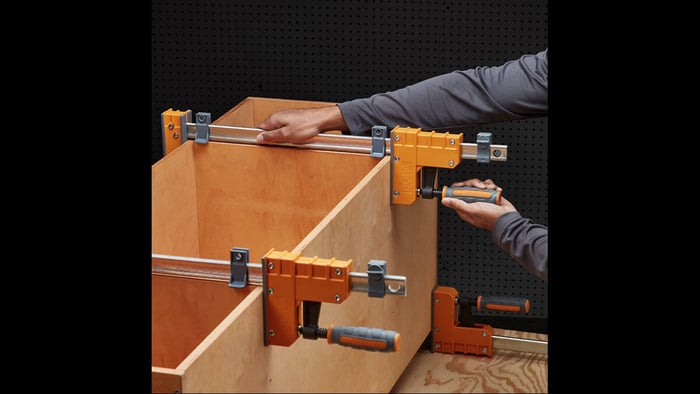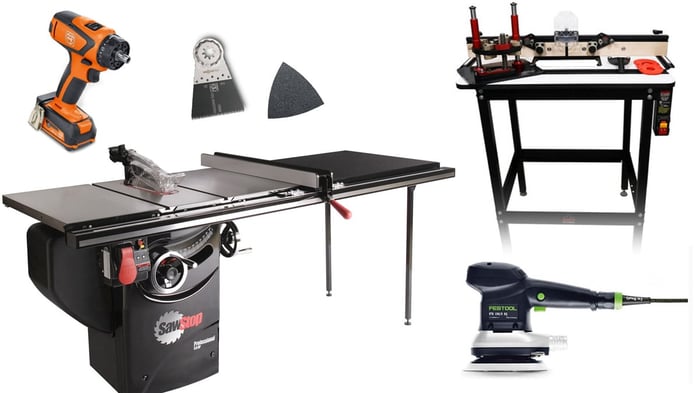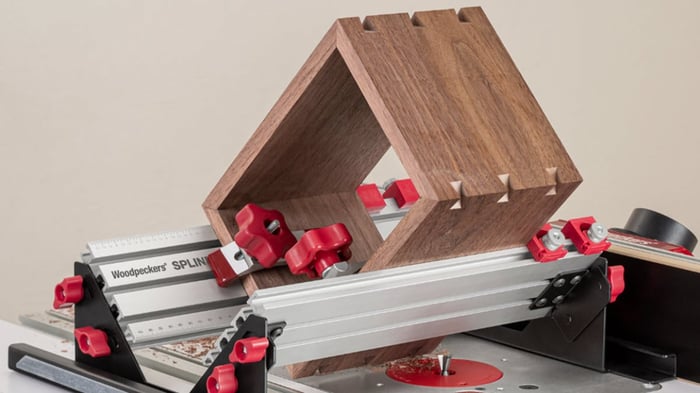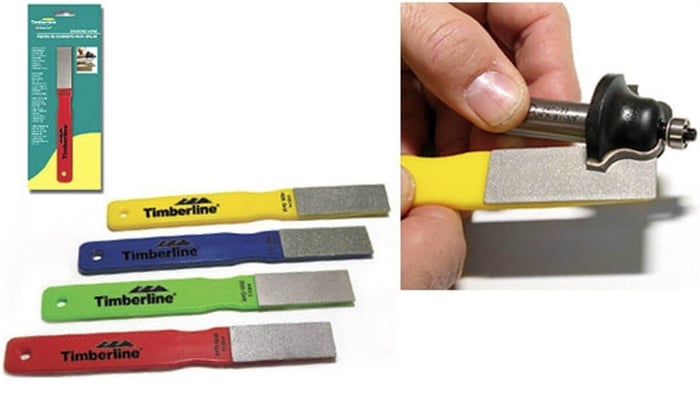
Clamp It Right: Essential Clamps for Every Project
Clamps play a crucial role in woodworking endeavors by providing the necessary pressure for glue-ups and securing pieces in position. Within the realm of clamps, a variety of options are available, spanning from parallel bar clamps to spring clamps.
Selecting the appropriate clamps for your specific project is essential.
Why Clamps are Essential Tools
Clamps are critical tools in woodworking projects as they are responsible for holding and securing wood pieces together, ensuring a precise and sturdy construction. They play a pivotal role in securing joints, enabling woodworkers to establish robust connections between various pieces.
Along with their primary function of holding pieces together, clamps assist in maintaining alignment throughout the construction process, guaranteeing that the project is accurately squared and aligned. Clamps are crucial for exerting pressure on glue joints, facilitating a firm and enduring bond between the wood pieces.
By contributing to the quality and safety of the project, clamps are essential tools that every woodworker depends on to achieve successful and professional outcomes.
Types of Clamps
It is essential for any woodworker to have a comprehensive understanding of the various types of clamps available. This applies whether you are working in a professional woodshop or a DIY workshop.
Overview of Different Clamp Styles
The range of clamp styles available provides a variety of versatile and adjustable grip options to meet different woodworking requirements.
For example, C- or F-clamps are recognized for their sturdy and secure grip, making them well-suited for holding heavy materials in position during tasks like furniture construction.
Conversely, spring clamps are compact and convenient for delicate projects such as securing glue joints or stabilizing small components during drying.
Bar clamps are favored for their extended reach, making them ideal for larger projects such as cabinet construction or panel glue-ups that require a longer reach.
Essential Clamps for Every Woodworking Project
In every woodworking project, specific clamps are crucial tools for holding and securing wood pieces effectively.
F-Clamps
F-Clamps, known for their distinctive F-shaped design, offer impressive versatility for various clamping needs in a workshop. These clamps are equipped with a fixed jaw, a sliding jaw, and a screw mechanism that enables precise tightening. This combination allows woodworkers to efficiently hold workpieces together during assembly, gluing, and light-duty tasks.
To make the most of F-Clamps, it's important to select the appropriate size and position them correctly to ensure even pressure distribution. Utilizing scrap wood between the clamp jaws and the project can help prevent damage and improve stability.
When applied correctly, F-Clamps become indispensable tools, enhancing the efficiency and quality of any woodworking project.

Piher Maxipress E Clamp, 12" or 24" Capacity, heavy-duty cast-iron, with a 3.3" jaw & 2,025 lb. clamping force, incorporate a durable, flip handle for torque. Why is an F clamp called an E clamp? I don't know, but they're awesome.
Spring Clamps
Spring, or quick clamps are equipped with a quick-release mechanism, making them particularly well-suited for DIY projects that call for swift and temporary clamping solutions. These adaptable clamps are highly regarded for their user-friendly nature, enabling individuals to efficiently secure materials in place without the need for intricate setups.
A key advantage of spring clamps lies in their capacity to deliver consistent pressure, ensuring a secure grip on the workpiece. They prove especially useful in woodworking, upholstery, and crafting endeavors where speed and convenience are of utmost importance.
While spring clamps excel in tasks necessitating rapid adjustments or frequent repositioning, they may not be suitable for heavy-duty applications that require a more robust hold. It is essential to evaluate the clamp's strength and size to align with the specific project requirements for optimal outcomes.

Piher Adjustable Spring Clamps are available in 3 or 5 cm
Parallel and Panel Clamps
Parallel clamps are an excellent tool for achieving accurate alignment and consistent pressure when working with woodworking joints. They are particularly well-suited for tasks like edge gluing, panel assembly, and cabinet making, where maintaining straight and flush joints is essential for ensuring the overall quality of the project. These clamps are recognized for their robust construction and long-lasting durability, making them capable of withstanding the high clamping pressure required for larger and more intricate woodworking projects. By evenly distributing pressure, parallel clamps help to prevent warping or distortion of the materials being joined, leading to the creation of professional-looking and durable finished pieces.

JET Parallel Clamps provide precision and power with exact 90 degree clamping at up to 1,000 lbs of pressure. Reversible clamping movable jaw can be reversed to be used as a spreader. Range of sizes include 12" / 24" / 31" / 40" / 50" / 60" / 82" / 98" capacity
Panel, or bar clamps serve as a fundamental tool in woodworking by securing large pieces of wood and distributing pressure evenly across joints. They feature a long metal bar with adjustable clamping jaws. Suitable for general clamping needs, including edge joining, panel clamping, and various glue-ups. They can handle a wide range of clamping tasks but may not always keep workpieces perfectly aligned.
Their robust construction ensures durability to withstand the pressures of challenging woodworking tasks, while their extended reach offers substantial support for larger workpieces.

Woodpeckers ClampZILLA 4-Way Panel Clamp places bars on both sides of your stock, joined together by a self-centering scissors joint on both ends. 18" or 38" capacity, sold individually or in packs of 4.
Corner Clamps
Corner clamps, or clamping squares, play a crucial role in securely positioning wood pieces at precise angles during the assembly process. These versatile tools are specifically crafted to maintain a perfect right angle between two wood pieces, ensuring the accuracy and stability of your project.
To maximize the effectiveness of corner clamps, it is important to adjust them firmly to prevent any movement while gluing or fastening the pieces together. For larger projects, utilizing multiple corner clamps can offer additional support and enhance the precision of the assembly.
Verifying the angles using a square before tightening the clamps is a recommended step to ensure flawless results. Whether you are constructing a simple picture frame or a complex cabinet, the use of corner clamps streamlines the assembly process and contributes to the creation of professional-looking, meticulously crafted woodworking projects.

Woodpeckers Steel Clamping Squares are held to a tolerance of +/- .0255 degrees! Come in 4-packs, sized 3", 6", or 9"
Choosing the Right Clamps for Your Project
Selecting the appropriate clamps for your woodworking project requires taking into account the particular requirements of the task to guarantee efficiency and accuracy.
Factors to Consider
When you are in the process of choosing clamps for your woodworking projects, it is important to take into account several factors. These factors include the size of the wood pieces, the type of joints being used, and the amount of pressure required.
The size of the wood pieces plays a significant role in determining the appropriate length and throat depth of the clamps to be used. For larger wood pieces, longer clamps or a combination of multiple clamps may be necessary to ensure an even distribution of pressure.
Additionally, the type of joints being employed, such as butt joints, miter joints, or dovetail joints, will influence the selection of clamps. Different joints may call for specific types of clamps, such as bar clamps for edge-to-edge glue-ups or corner clamps for achieving precise right angles.
Lastly, the amount of pressure needed is dependent on factors like the type of wood species being used and the demands of the project. Softwoods typically require less pressure compared to hardwoods in order to prevent any potential damage to the material.
Tips for Properly Using Clamps
Utilizing clamps correctly in woodworking guarantees that your projects are not only securely held in place but also protected from any potential damage or misalignment.
Techniques for Maximum Effectiveness
To optimize the efficiency of your clamps, it is essential to focus on techniques such as applying uniform pressure and ensuring proper clamp placement.
When using clamps, it is important to ensure that the pressure is uniformly distributed across the entire length of the clamp surface. This helps to prevent any potential imbalance or slippage while in use. It is also crucial to consider the material being clamped and adjust the pressure accordingly; lighter pressure may be required for more delicate materials.
Correct placement of the clamp is vital for stability and security. Placing the clamp closer to the edge of the workpiece enhances grip and stability. It is helpful to visualize the clamp as an extension of your hand, providing support where it is most needed.
Frequently Asked Questions
What is the purpose of using clamps in woodworking projects?
Clamps are essential tools for maintaining the stability and accuracy of wood pieces during construction. They hold the wood in place while the glue dries, ensuring that the final product is strong and durable.
What type of clamps are considered essential for woodworking projects?
The most essential clamps for woodworking projects are spring clamps, parallel or bar clamps, and F-clamps. These clamps offer versatility and strength for a wide range of woodworking needs.
How do I determine the right size of clamp for my project?
To choose the right clamp size, you need to consider the length and thickness of the wood pieces you are working with. Generally, the clamp should be slightly longer than the pieces being joined and have a throat depth that can accommodate the thickness of the wood.
Can I use any type of clamp for any woodworking project?
It is best to use the appropriate type of clamp for each project to ensure the best results. For example, bar clamps are suitable for large panels, while spring clamps are better for smaller, delicate pieces. It is also essential to consider the strength and pressure of the clamp when selecting the right one for your project.
What are some common mistakes to avoid when using clamps in woodworking projects?
Some common mistakes to avoid include using too much pressure, not using enough clamps, and using clamps that are too small for the project. It is also crucial to make sure the clamps are evenly distributed along the wood and that the wood is properly aligned before tightening the clamps.
How can I ensure my clamps last for a long time?
Proper maintenance is key to ensuring the longevity of your clamps. After each use, clean off any glue or debris and store them in a dry place. It is also essential to periodically check the clamps for any signs of wear and tear and replace them if necessary.
Check out our Downloadable and Customizable Clamp Rack CNC Plans!





